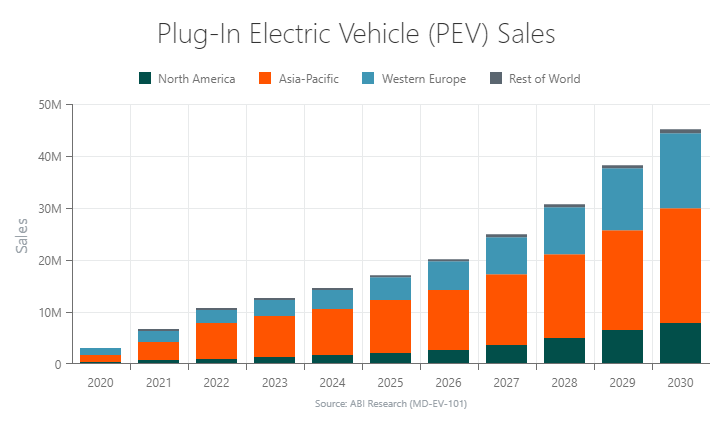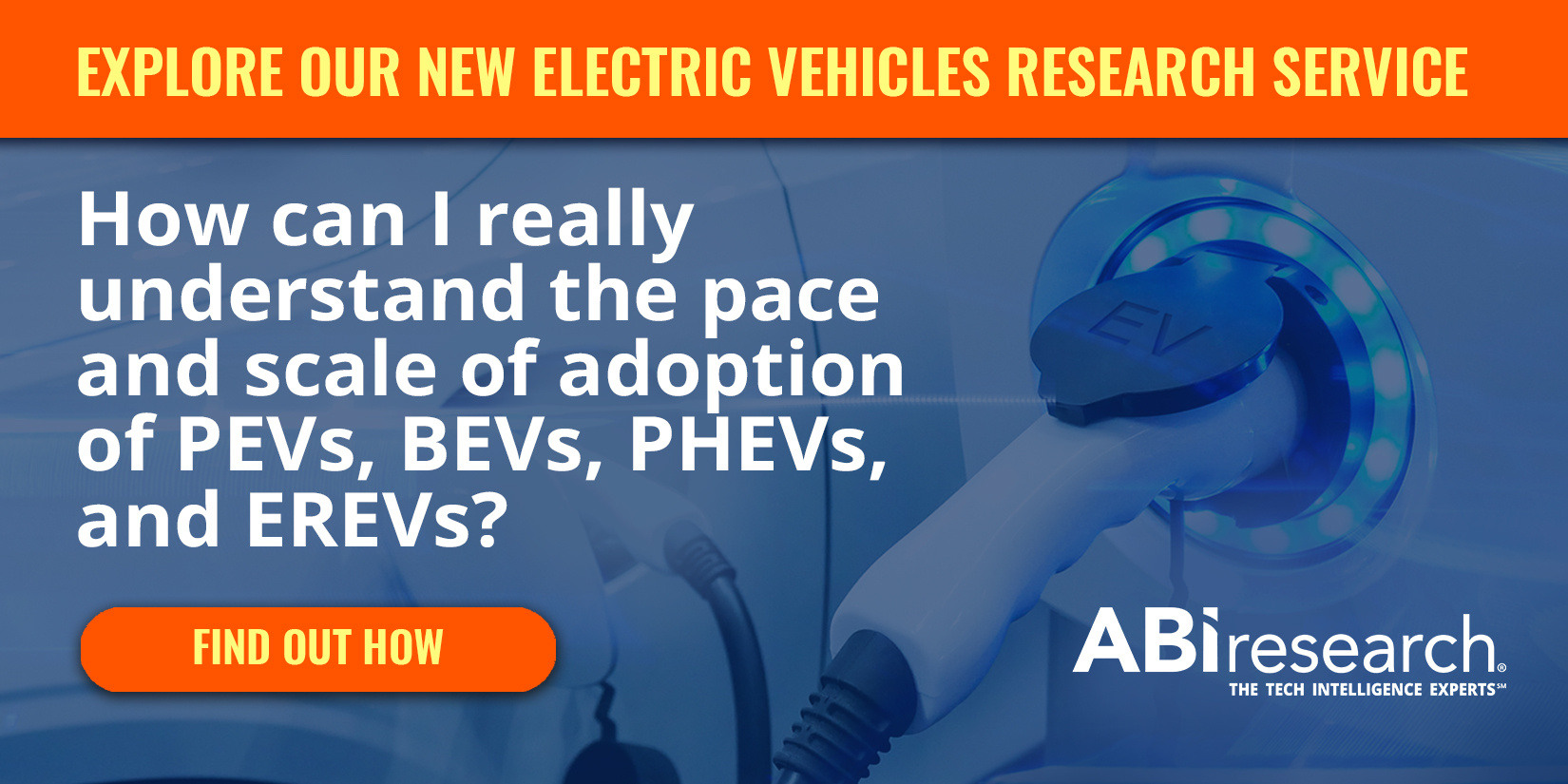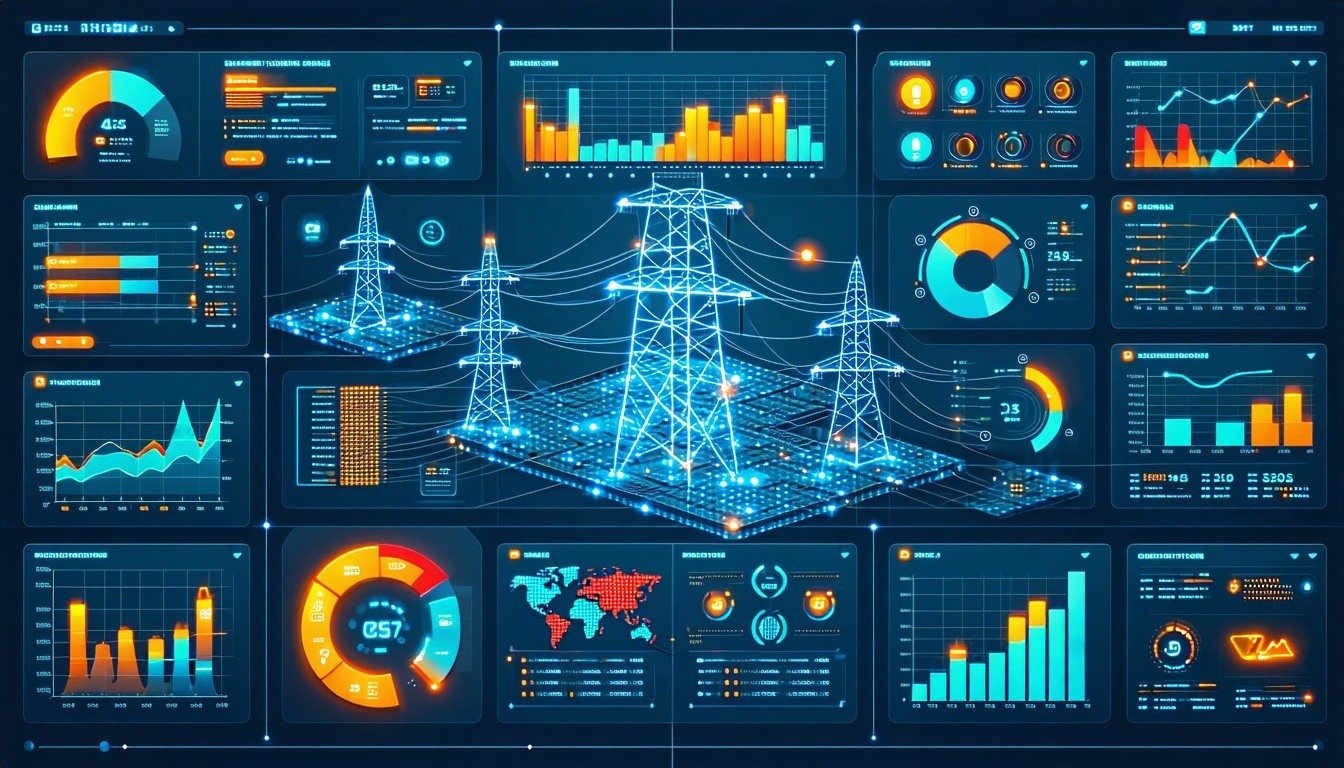Can the power grid handle the growing uptake in Electric Vehicle (EV) adoption? This is a common question about EVs with enormous real-world implications. On one hand, increased adoption of EVs is integral to meeting a country’s zero-emissions targets, but on the other, it further strains the grid and risks a blackout due to surging EV battery charging needs.
While the growing demand for EVs presents huge challenges to grid operators, it’s an enticing market opportunity for companies that can provide effective smart charging solutions that make the power grid ready for more EVs.

How Do Electric Vehicles Affect the Power Grid?
The most significant way electric vehicles affect the power grid is the added total energy consumption. For example, if a family decides to replace their two Internal Combust Engine (ICE) vehicles with EVs, this move will increase their daily household energy usage by 74%.
Now, imagine every family in America, or another country, switching to electric cars. The effects would be significantly detrimental to the power grid.
We are at the point when EVs can potentially power your home. While this feature might be exciting for many people and could even be practical for power outage scenarios, it also highlights just how energy-hungry modern EVs can be.
Despite the drastic increase in energy utilization that mass adoption of EVs would cause, the real challenge is in energy distribution.
Many countries have more than enough electrical energy to meet the total future demand for EVs, but that energy isn’t always ready to be drawn when required. In a world where grid imbalances are normal due to increased electricity usage, the last thing a grid operator needs are millions more EV owners charging their cars—and pulling from the grid—at the same time.
A major aspect of this challenge is the rapid transition to solar, wind, and other renewable energy in some of these countries. The problem is that renewable energy availability is not always aligned with peak demand times, increasing the risk of a power blackout when the grid becomes overwhelmed.
Building New Infrastructure Is Not the Immediate Answer to Electric Grid Challenges
To accommodate the increased energy demand from EVs, it makes sense to just simply expand the power-generating infrastructure and re-energize the existing electrical infrastructure. However, such projects would require up to 15 years and numerous resources to complete. This timeline, crucially, does not satisfy most governments’ deadlines to ban ICE vehicle sales.
Another grid challenge with EVs is the fact that electrical systems must be continuously balanced. This ensures that the power frequency stays within the safe grid network frequency operating limits.
To put it another way, if the grid’s power frequency plunges, the laws of physics kick into action and put a halt to the energy flow immediately. From there, the power shuts down to avoid irreversible damage to the generators.
Given these challenges that come with electric vehicles, governments, grid operators, utilities, EV charging station operators, and other energy supply and distribution stakeholders must adopt smart charging tools and strategies. Only then can they be sure the power grid can handle greater adoption of EVs.
Smart EV Charging for Grid Resilience
Consumers are becoming more inclined to purchase an Electric Vehicle (EV). Even in the United States, where people are more hesitant about EVs, 7 in 10 Americans are open to the idea of buying one. As the world transitions from ICE vehicles to EVs, the power grid will experience challenges that have never existed before. Thus, questions linger about whether the grid can handle more EVs on our roads.
It is vital that all stakeholders—from battery manufacturers to charging station operators—understand the crucial role of smart charging features and strategies in making certain that the power grid is ready for mass EV adoption.
Striking a balance between grid capacity and EV charging is the path toward meeting the vast number of sustainability goals set forth by governments around the world.
To maintain a solid balance between EV uptake and electric grid usage, the following smart charging features and strategies will be key:
- Demand Response (DR) programs
- Dynamic power sharing
- Dynamic EV charge pricing
- Bidirectional charging
- Battery buffered chargers
To learn about the most effective ways to ensure the power grid is ready for mass adoption of zero-emissions cars, read our Electric Vehicle Smart Charging: Preventing the Dreaded Grid Blackout Research Highlight. This content is part of ABI Research’s Electric Vehicles Research Service.






